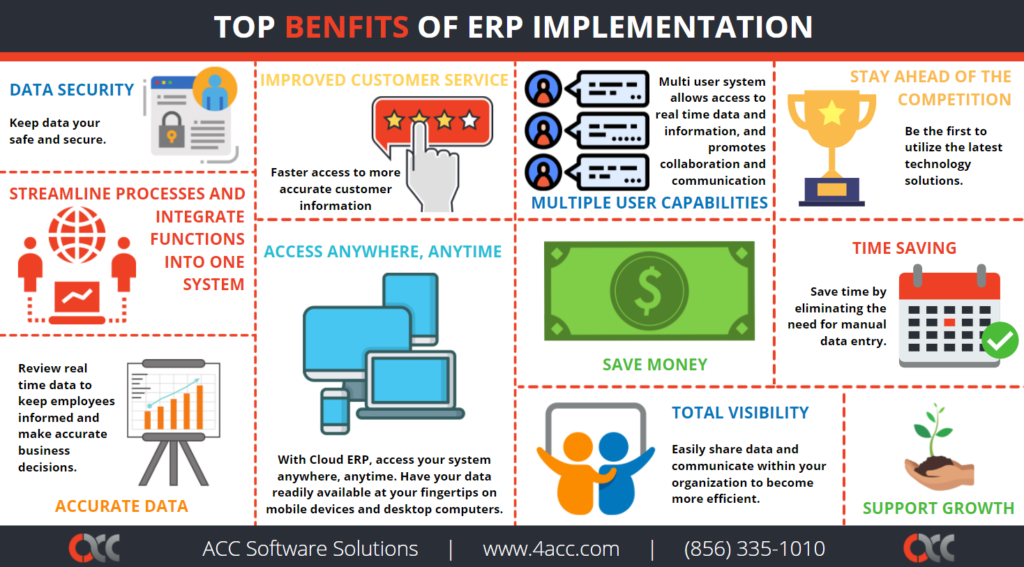There’s a great deal that goes into these complex ERP solutions, so don’t worry if you become overwhelmed, ACC is here to walk you through the entire process. Let’s start with the basics of ERP.
ERP stands for Enterprise Resource Planning – the ability to deliver an integrated set of business applications into one system. But that answer isn’t so simple, is it? Think of an ERP solution as a system with a large data base that maintains all of your information related to your business procedures. This can include accounting, order management, inventory, distribution, manufacturing operations, productions, job costing, reporting, e-commerce, human resources, marketing, sales, customer service, and more.
Without an ERP solution, your data is undoubtedly difficult to access and chaotic within each department. By using an ERP solution, data from various departments can be easily accessed and used by everyone. The main goal of an ERP solution is to reduce the amount of manual labor your team does and simplify existing businesses workflows.

Nearly every business can positively benefit from utilizing an ERP solution. Your business will thrive with real-time visibility, control, insight, adaptability, flexibility, and scalability. Read more with the ‘5 Signs your Business Needs ERP TODAY’ blog.
The term ERP was coined in 1990 by Gartner but the history of ERP goes back more than 100 years. In 1913, Ford Whitman Harris developed what was later referred to as the economic order quantity (EOQ) model, a manufacturing system for production scheduling. This paper-based model soon became the standard for manufacturing until 1964, when toolmakers Black and Decker became the first company to adopt a material requirement planning (MRP) solution which utilized a mainframe computer combined with EOQ concepts. MRP became the new standard until it was reworked into MRP II (manufacturing resource planning) in 1983. Throughout the 1970s and 1980, models similar to MRP II were developed for industries and business activities outside the scope of manufacturing, such as finance, customer relationship management, and HR data. Thus, setting the stage for ERP as we know it today. To learn more about the history of ERP, read the ‘What is ERP‘ blog.
To get your ERP project started, contact one of our representatives and we will walk you through the entire process.
Solutions by Industry
What's New
Outgrowing Your ERP? Why Acumatica is the Upgrade You Need
Read MoreSubmitted by Stephanie Dean on Thu, 06/26/25 - 15:52
Why You Should Make the Switch: NetSuite to Acumatica
Read MoreSubmitted by Stephanie Dean on Tue, 06/17/25 - 13:36
Acumatica ERP for Sustainable Businesses
Read MoreSubmitted by Stephanie Dean on Thu, 05/29/25 - 10:37